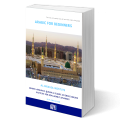Kaana and its sisters – كَانَ وَ أَخَوَاتُهَا | Arabic Free Course
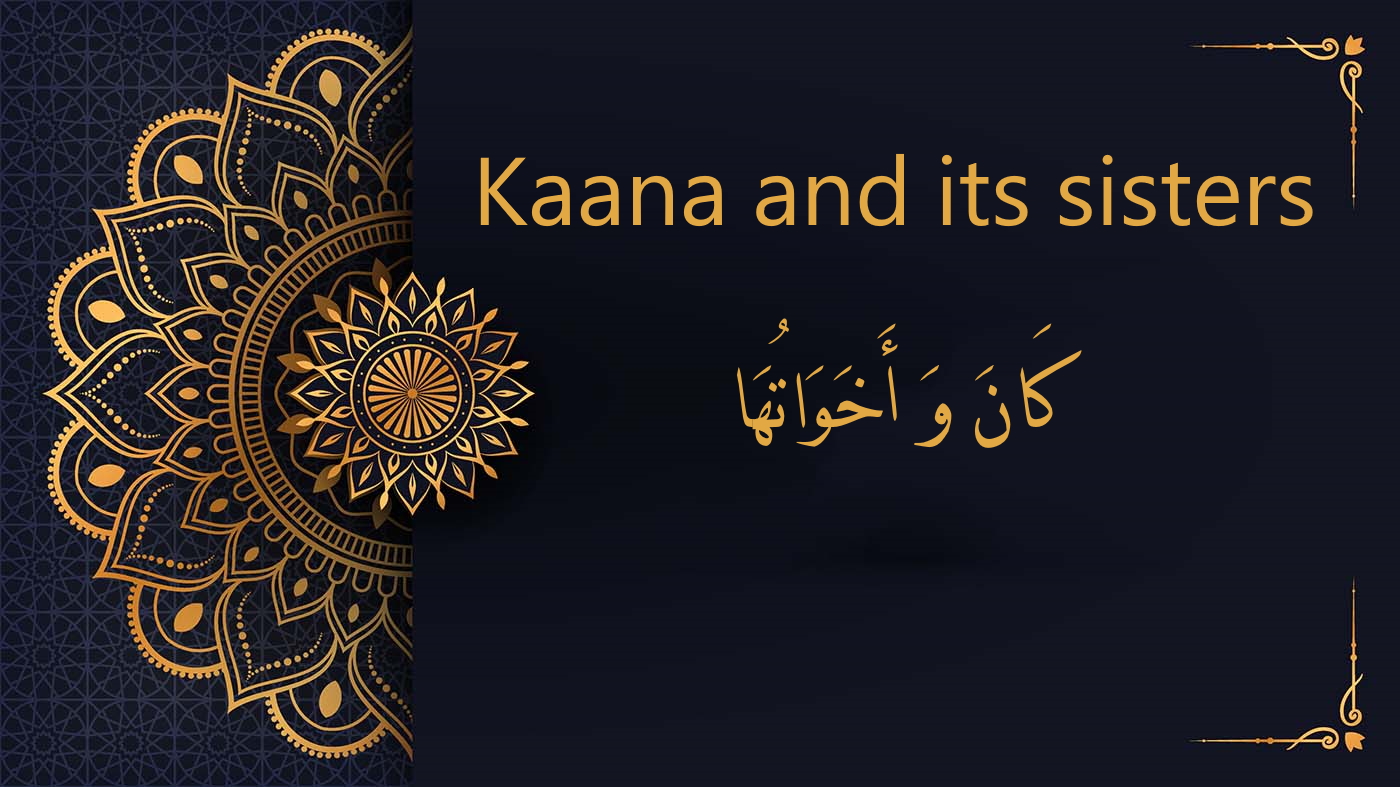
Kaana and its sisters in Arabic – كَانَ وَ أَخَوَاتُهَا Introduction The group of particles known as “Kaana and its Sisters” – كَانَ وَ أَخَوَاتُهَا: 1. **كَانَ (kaana)** – “to was”2. **صَارَ (ṣāra)** – “to become”3. **أَصْبَحَ (aṣbaḥa)** – “to become,” “to enter/do in the morning”4. **مَا زَالَ (mā zāla)** – “increasingly,” “continuously”5. **أَضْحَى […]
inna and its sisters – إِنَّ وَ أَخَوَاتُهَا | Arabic Free Course
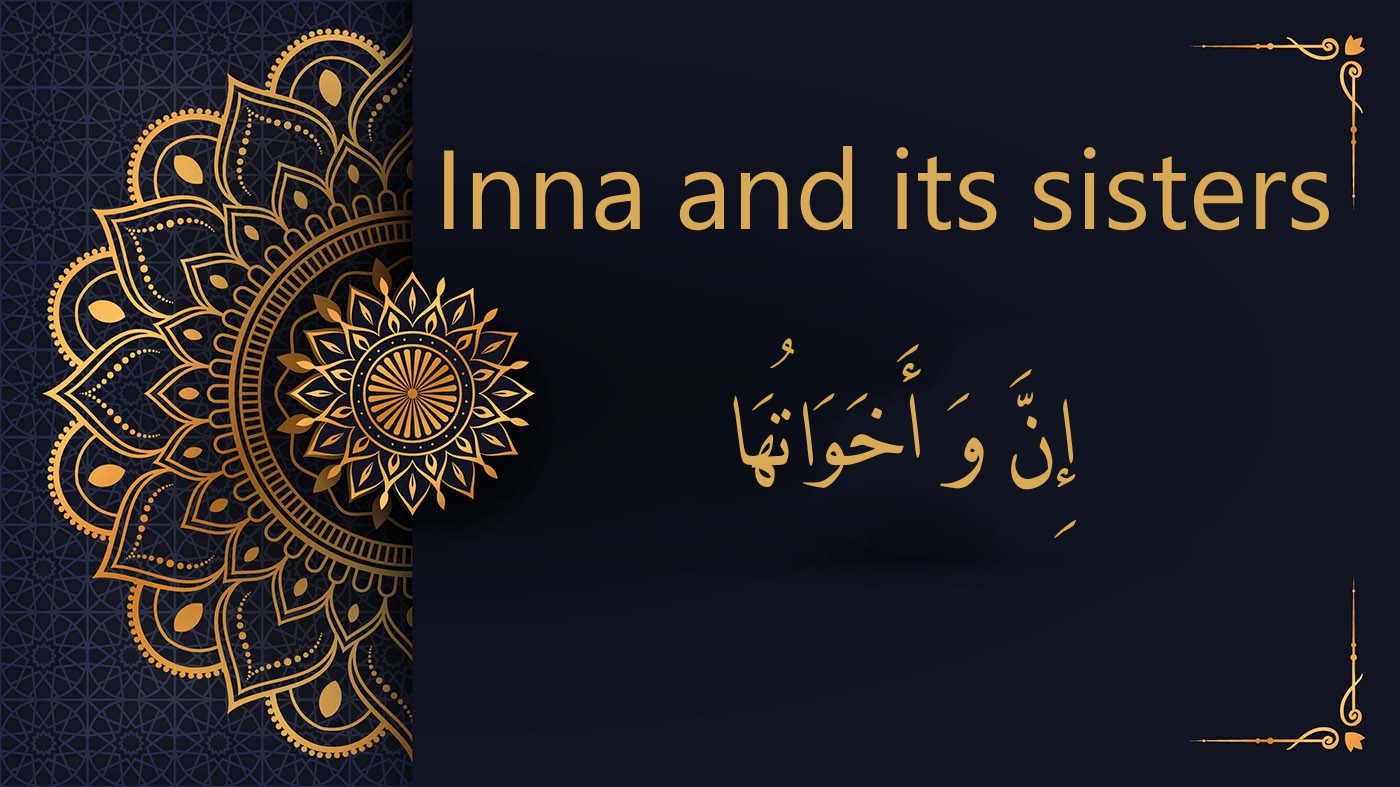
inna and its sisters in Arabic – إِنَّ وَ أَخَوَاتُهَا Introduction The particles known as “Inna and its sisters” – إِنَّ وَ أَخَوَاتُهَا – hold a significant position in Arabic syntax, imbuing nominal sentences with emphasis and nuance. إِنَّ (certainly): It underscores the truth or certainty of a statement. When it precedes a noun, […]
Conditional sentences in arabic – الْجُمْلَةُ الشَّرْطِيَّة | Arabic Free Course

Conditional Sentences in Arabic – الْجُمْلَةُ الشَّرْطِيَّة Introduction In Arabic grammar, conditional sentences are composed of two primary components: the condition itself, termed the protasis or فِعْلُ الشَّرْطِ, and the consequence or result of that condition, known as the apodosis or جَوَابُ الشَّرْطِ. In many cases, especially within verbal sentences, both the protasis and the […]
Kinds of feminine gender in Arabic – أَقْسَامُ المُؤَنَّثِ | Arabic Free Course
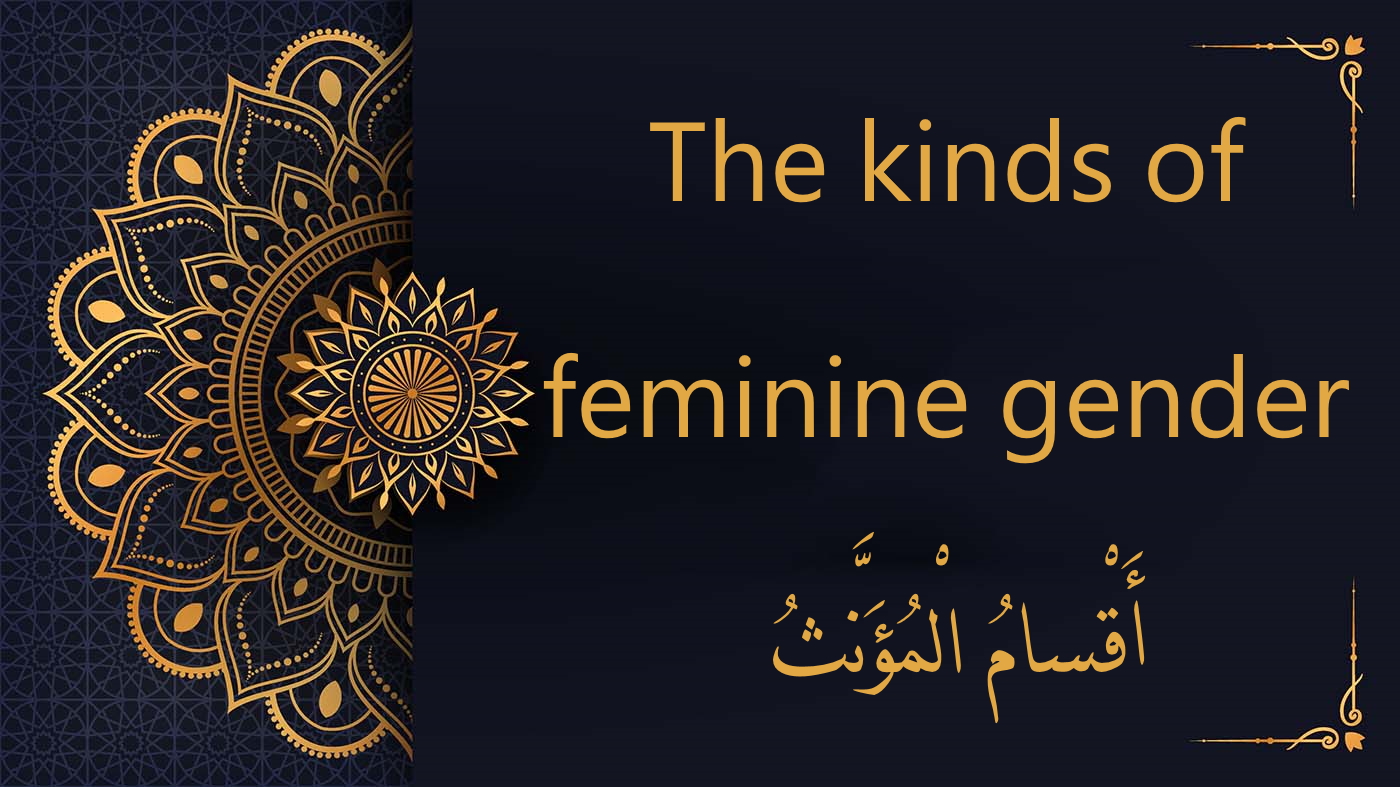
Kinds of feminine gender in Arabic – أَقْسَامُ المُؤَنَّثِ Introduction In Arabic, there are two primary genders: masculine (المُذَكَّرُ) and feminine (الْمُؤَنَّثُ). Outside of specific feminine categories, words generally default to the masculine form. 1. Words intrinsically feminine in meaning Examples: بِنْتٌ – a girl اِمْرَأَةٌ – a woman أُمٌّ – a mother […]
Noun of the instrument in Arabic – اِسْمُ الآلَةِ | Arabic Free Course
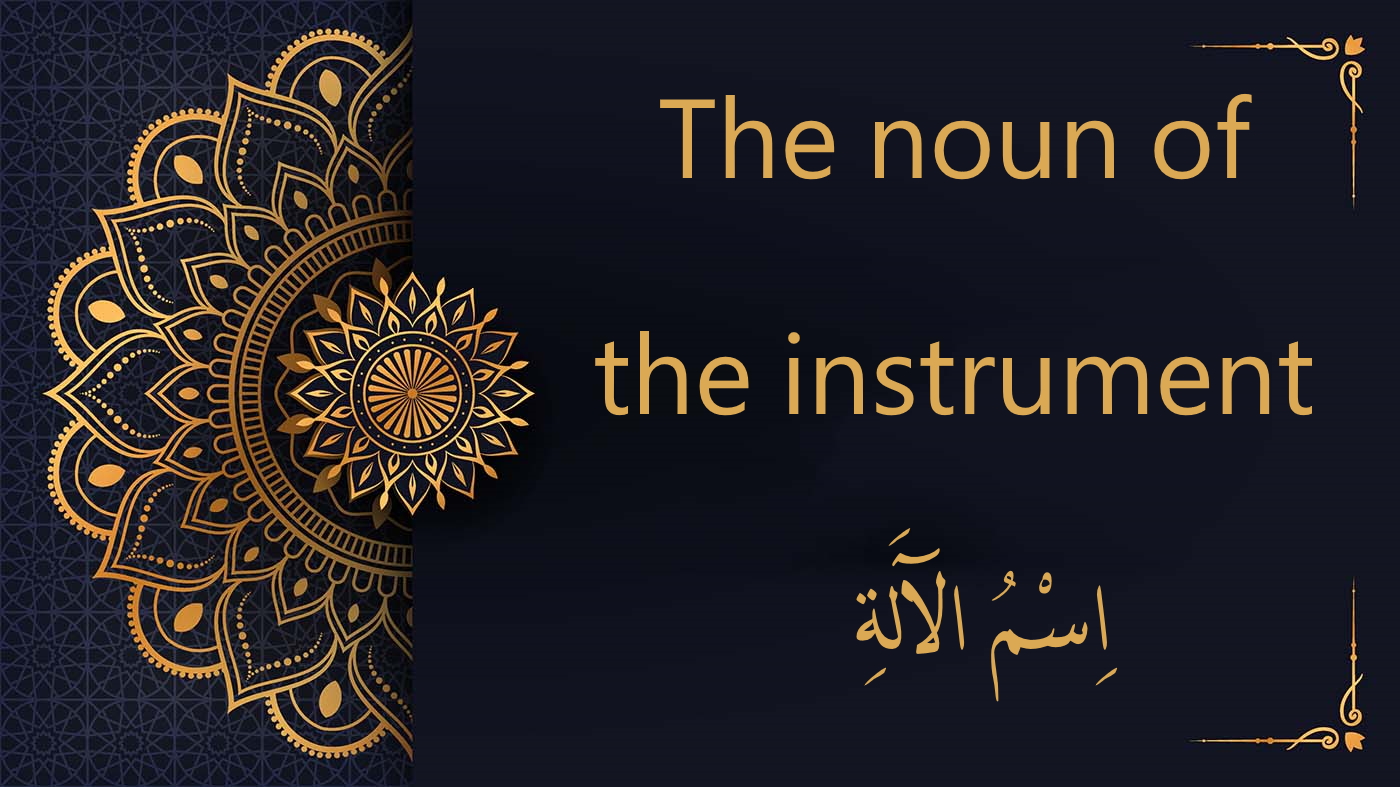
Noun of the instrument in Arabic – اِسْمُ الآلَةِ Introduction The noun of the instrument, known in Arabic as اِسْمُ الآلَةِ, specifically indicates the tool or means by which an action is executed. This noun often serves as an indicator of functionality in the Arabic language. One distinguishing characteristic of this noun is its […]
The noun of place and time – اِسْمُ الْمَكَانِ و الزَّمَانِ | Free Arabic Course

The noun of place and time – اِسْمُ الْمَكَانِ و الزَّمَانِ Introduction Nouns Denoting Place and Time in Arabic: A Deeper Look In Arabic grammar, nouns that express the place or time of an action rooted in a verb are a crucial component. These nouns are traditionally constructed following specific patterns: مَفْعِلٌ Pattern: Example: مَجْلِسٌ […]
Absolute negation in Arabic – لَا لِنَفِي الجِنْسِ | Free Arabic Course
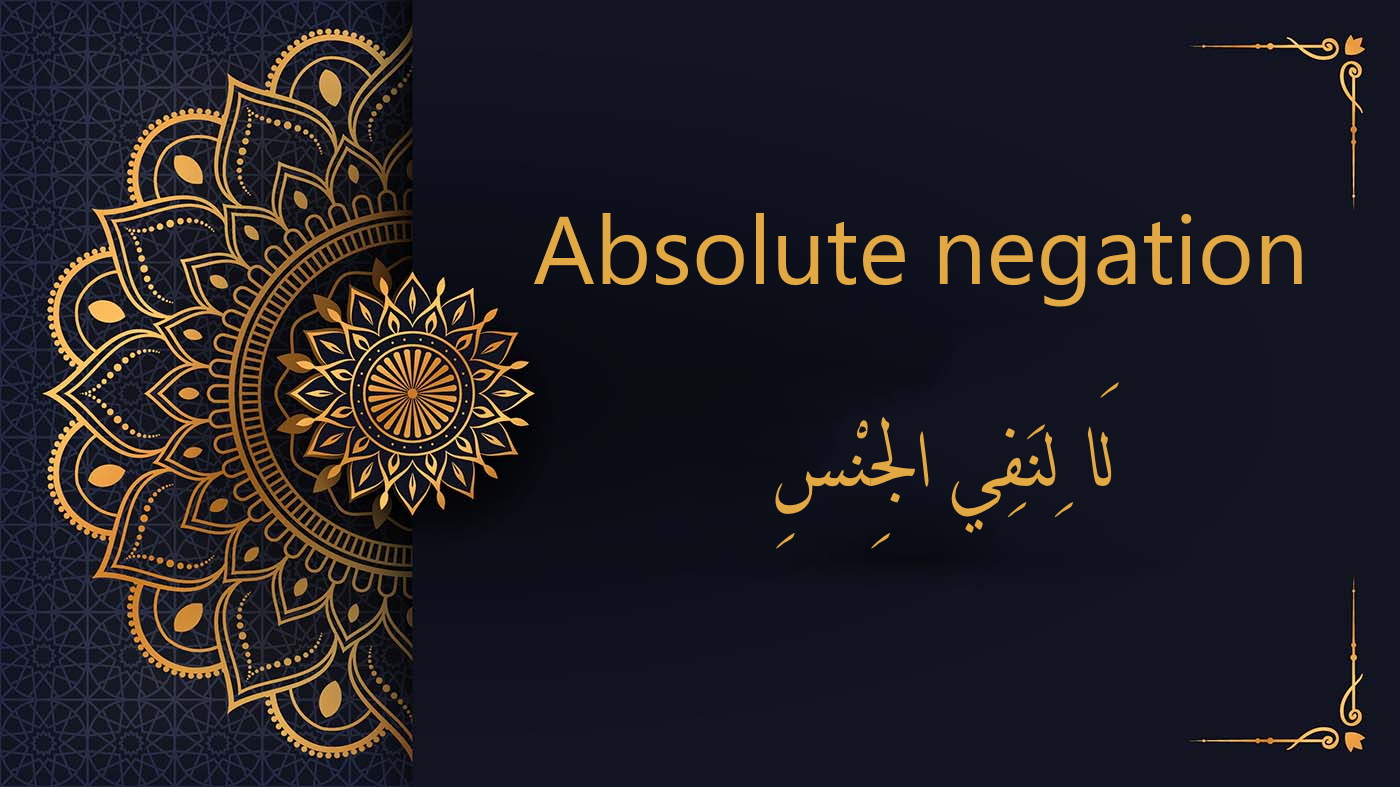
Absolute negation in Arabic – لَا لِنَفِي الجِنْسِ Introduction لَا إِلَهَ إِلَّا اللَّهُ “There is no god except God” (37:35) ذَلِكَ الْكِتَابُ لَا رَيْبَ فِيهِ This is the Book in which there is no doubt (2:2) The لا highlighted in the examples signifies absolute negation. It categorically denies […]
Exception in Arabic – الْاِسْتِفْنَاءُ | Arabic Free Course
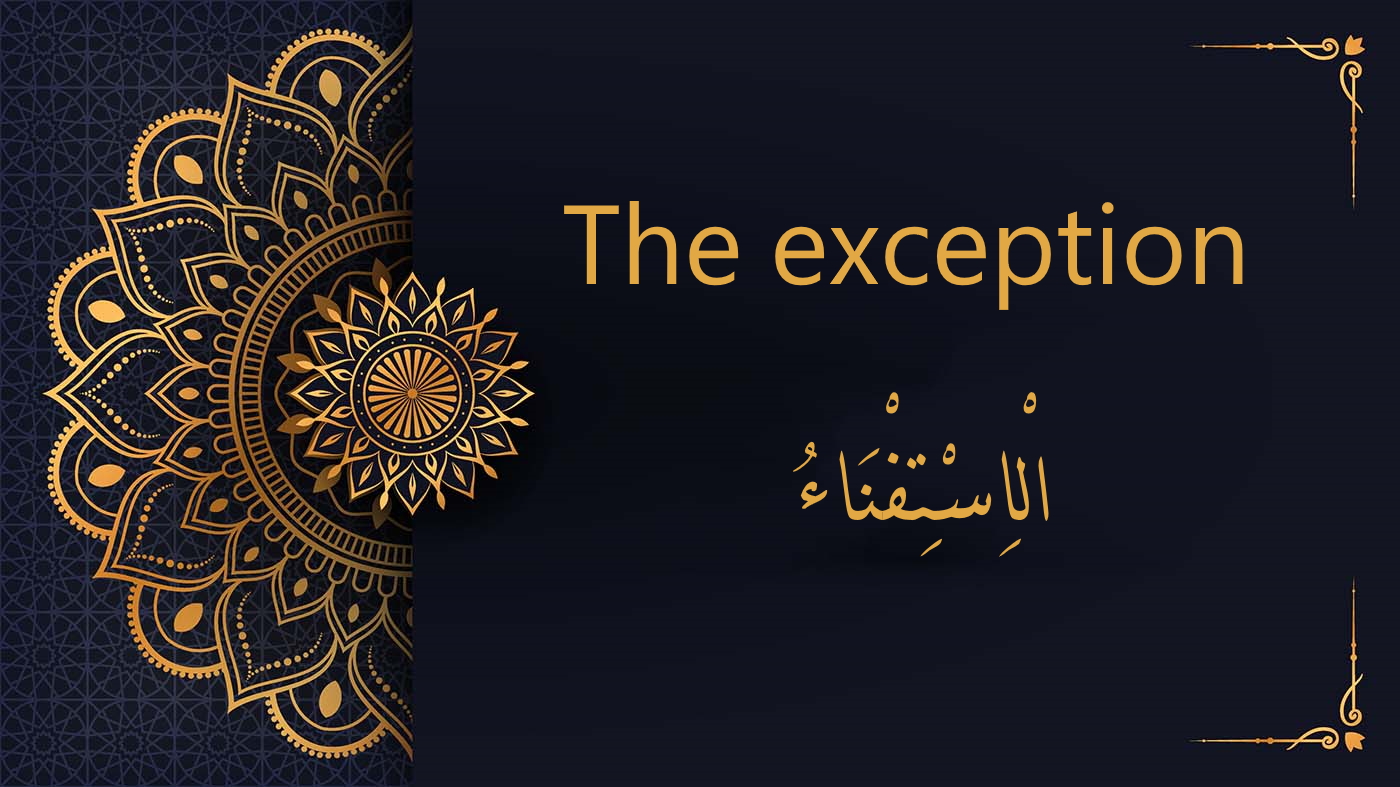
Exception in Arabic – الْاِسْتِفْنَاءُ Introduction In Arabic, the particle ‘إِلَّا’ signifies an exception. The noun that succeeds ‘إِلَّا’ is commonly in the accusative case, known as الْمَنْصُوب. Example: لَا إِلَهَ إِلَّا اللَّهُ There is no god except God (37:35) In a sentence utilizing the exception particle […]
Arabic Noun Declension Guide – الإِعْرَابُ في العربية | Arabic Free Course
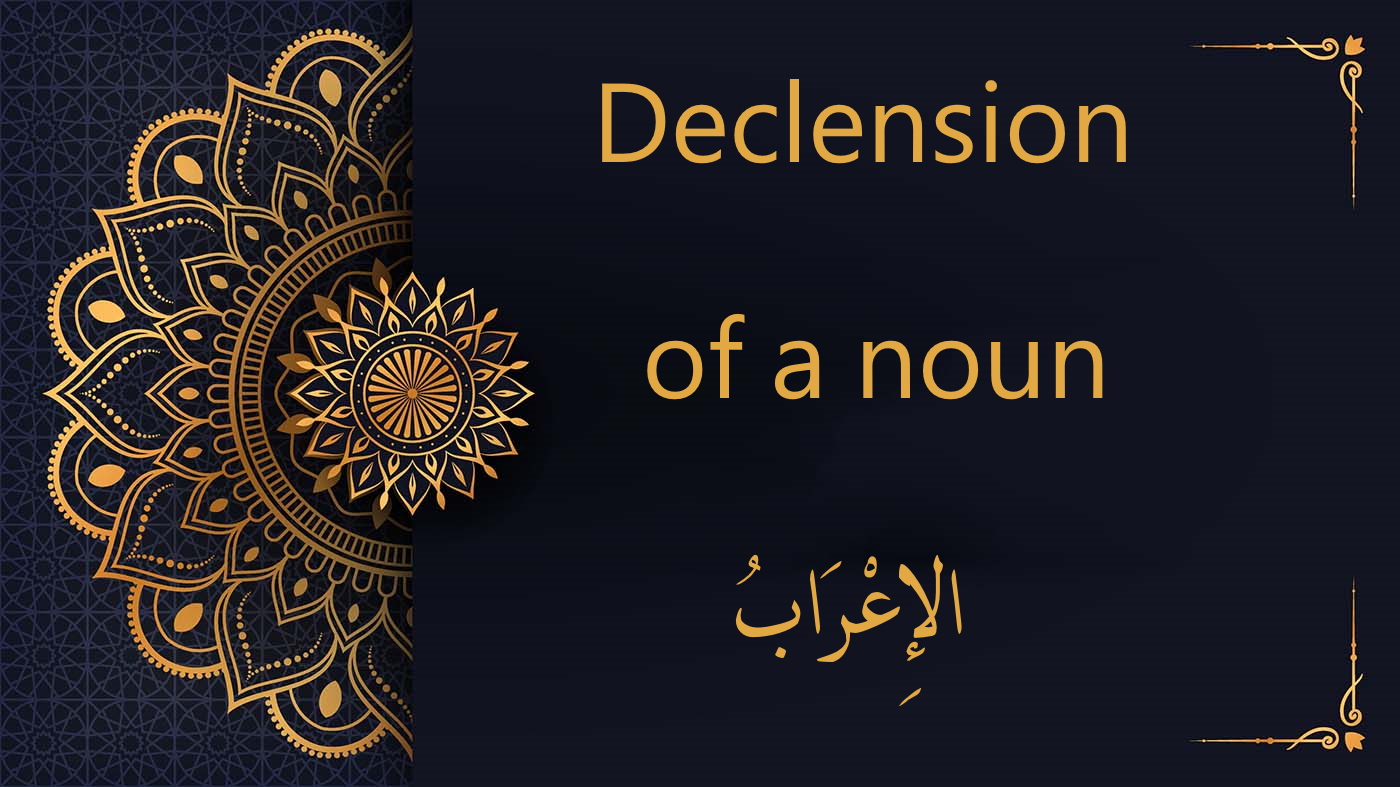
Arabic Noun Declension Guide – الإِعْرَابُ في العربية Introduction In Arabic, the term for declension is الإِعْرَابُ, introduced earlier in Chapter 2. Based on الإِعْرَابُ, nouns are categorized into two groups: Indeclinable (الْمَبْنِي) and Declinable (الْمُعْرَبُ). 1. Indeclinable nouns – الْمَبْنِي In Arabic, a noun with a consistent final vowel is termed الْمَبْنِي. This means […]
Four-lettered verbs in Arabic – الْفِعْلُ المُجَرَدُ الرُّباعِي | Free Arabic Course
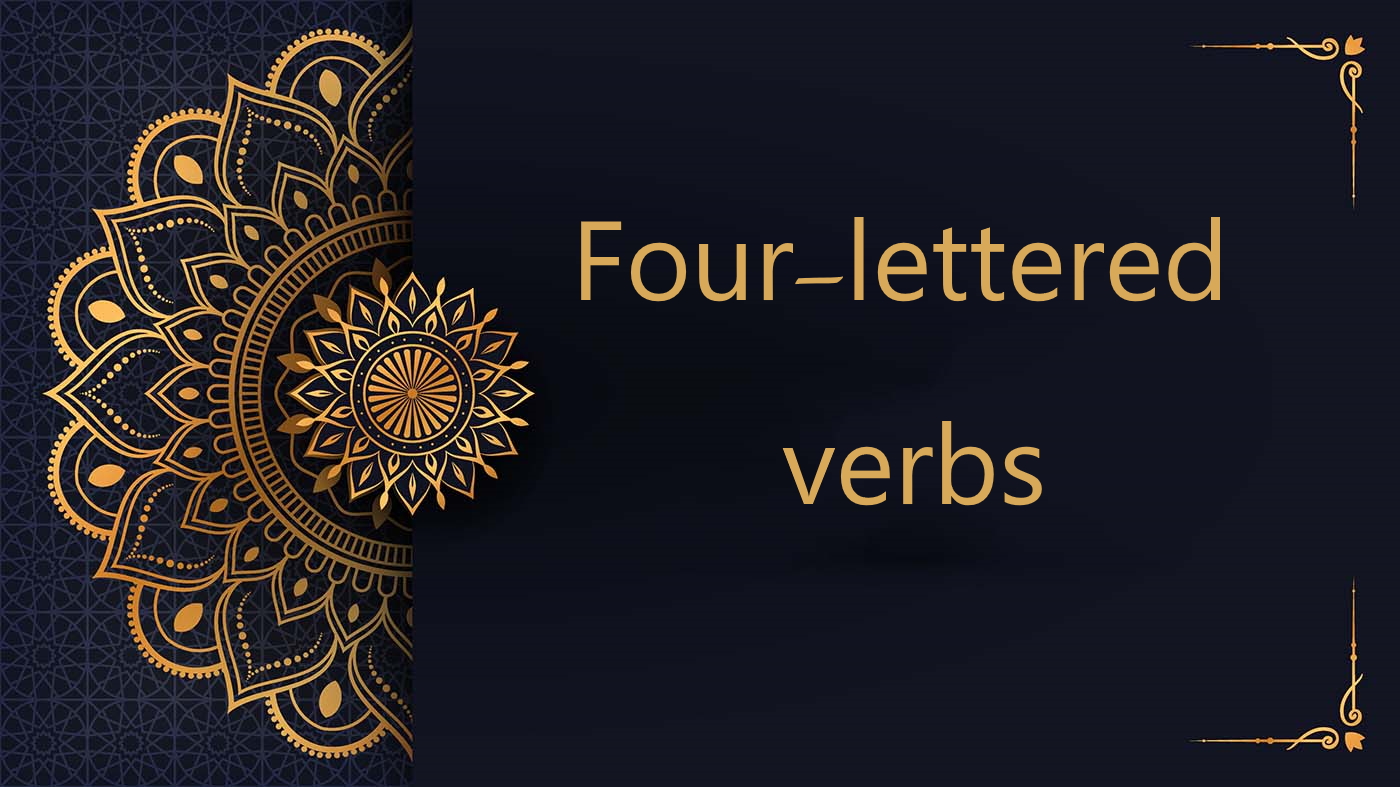
Four-lettered verbs in Arabic – الْفِعْلُ المُجَرَدُ الرُّباعِي Introduction The four-lettered verbs in Arabic, distinct from the more common tri-literal form فَعَلَ, are uniquely constructed from a root of فَعْلَلَ. These verbs consist of four letters and follow specific patterns: Form XII: فَعْلَلَ Form XIII: تَفَعْلَلَ Form XIV: إِفْعَلَلَّ Form XV: اِفْعَنْلَلَ. 1. Table […]

